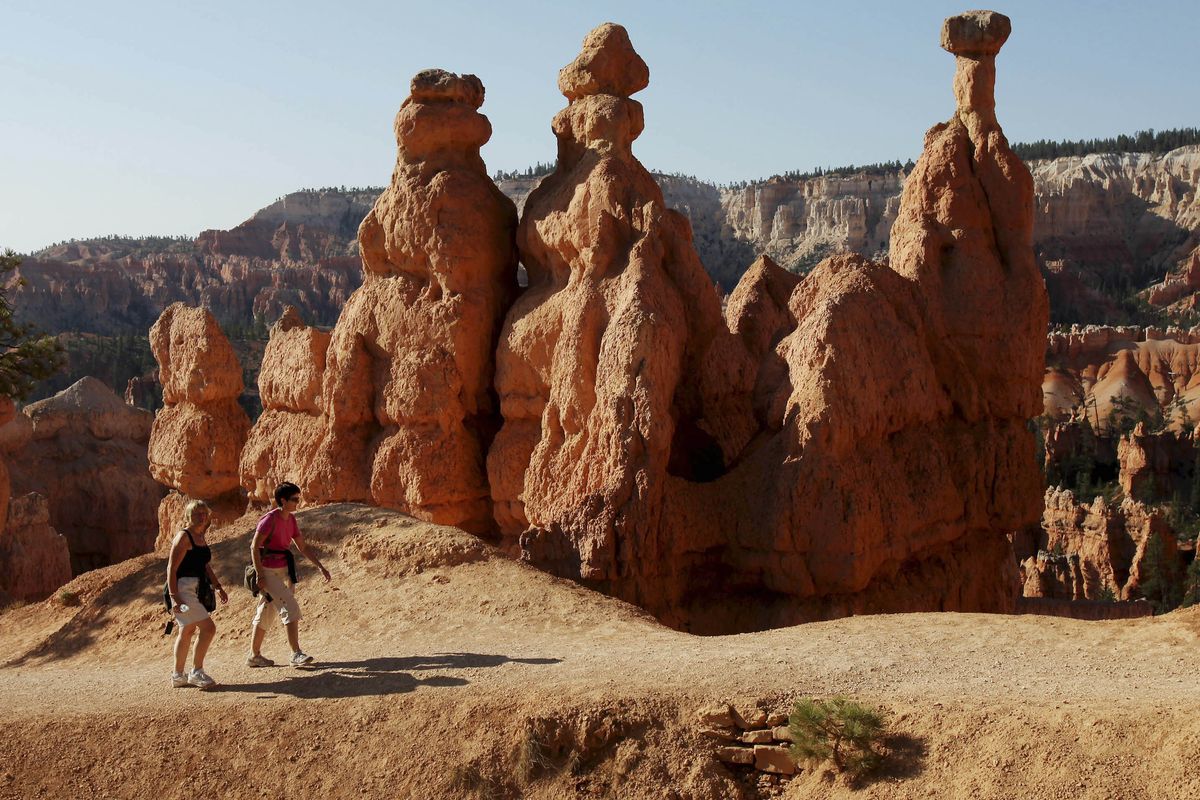2013: Year reviewed from outdoors perspective

A record-smashing run of fall chinook salmon to the Columbia River helped balance the mood for 2013 with the pall of gridlock that stretched into the outdoors from the halls of Congress.
Automatic federal budget cuts, called “sequestration,” forced serious government cutbacks across the board. Recreation wasn’t spared.
Snowplows that wake Yellowstone from its winter slumber every March were idled, forcing the national park to open late for peak season. Drinking water systems were not operating at some popular Bureau of Land Management recreation areas on Lake Coeur d’Alene. Staffing in BLM’s Coeur d’Alene recreation department was cut 50 percent.
These types of cuts piggybacked on an already well-established trend.
Only one-quarter of U.S. Forest Service trails met the agency’s own standards as it attempted to catch up with a $524 million maintenance deficit, according to the Government Accountability Office.
Volunteers put muscle into trail projects to help fill gaps of inadequate local and federal funding. In the Spokane area alone, citizens built downhill mountain biking trails on city parks land near Camp Sekani, upgraded trails in Liberty Lake County Park, built bridges on creek crossings at Mount Spokane State Park and brushed out trails to Stevens Lakes, Chilco Mountain and other popular destinations in the Idaho Panhandle National Forests.
Prospects for more government help were not positive.
The 1.1 million-acre Colville National Forest, for example, reported a 62 percent decrease in employees since the early 1990s, a 5 percent reduction in overall budget in each of past four years, a 46 percent decrease in road maintenance contracting in the past two years, and a 64 percent reduction in the already meager recreation budget expected in 2014.
More bad news fouled recreation-related economies on Oct. 1 when another budget impasse in Congress forced a government shutdown.
Utah’s tourism industry alone took a $30 million hit from the shutdown that idled the state’s popular national parks for 16 days. River rafters with coveted permits to float the Colorado River through Grand Canyon were among the hardest hit. After years of applying for permits and group investments of up to $30,000 in travel and gear plus vacation time for the 30-day trips, they were turned away at the launch by armed rangers.
The closure that affected 401 national parks was only the second time the Grand Canyon has been shut down since it opened in 1919.
Boat launch closures on Lake Roosevelt National Recreation Area ruined anglers’ plans during a prime period for trout fishing.
Federal campgrounds were gated as hunting seasons peaked. Closure of Turnbull National Wildlife Refuge trashed the week-long hunting season for nine muzzleloaders who’d beat the high odds of drawing special refuge cow-elk tag.
Nature often was heavy-handed, too.
Montana closed or restricted several rivers because of drought and warm water conditions, including the Big Hole, Bitterroot, Blackfoot and Clark Fork. The Bitterroot dropped to a 30-year low flow in August.
High-winds from an Aug. 25 thunderstorm stirred up a heat-caused algae bloom and killed at least 10,000 kokanee in Lake Koocanusa near Libby.
Thunder storms throughout the West seemed to take an unusually heavy toll, setting fires that closed Idaho wilderness areas, causing landslides, one of which closed the North Cascades Highway. A man was killed in his tent by a huge tree toppled by high winds at Stagger Inn Campground northwest of Priest Lake on Aug. 25.
Hikers in Glacier, Yellowstone and Rocky Mountain national parks were injured or killed within a 30-hour period in July.
Outdoor woes couldn’t all be blamed on Congress or the weather:
• Unruly target shooters prompted Spokane County to create no-shooting zones off Koth Road near Newman Lake and off Starr Road south of Mica Peak.
• Exploding targets were banned on several national forests in the West after they were blamed for igniting forest fires. An Illinois man was charged $168,500 by the federal government for costs involved in a 440-acre central Idaho blaze he ignited in 2012 while shooting at an exploding target.
• Three major illegal fishing cases involving organized criminal groups of Eastern European descent were busted by Washington Fish and Wildlife police at Banks Lake and at Lake Lenore, where four gillnetters killed 242 Lahontan cutthroats.
Public lands management lurched forward. Notable 2013 actions include:
• Revised management plans for the Kootenai and Idaho Panhandle national forests were released. The Forest Service must respond in 2014 to objections on issues ranging from logging to wilderness.
• Lawsuits were filed against the Clearwater National Forest Travel Management Plan that closes 200 miles of national forest trails to motorized vehicles and the U.S. Fish and Wildlife Service’s 2012 decision to cut more than 93 percent of protected habitat for the endangered mountain caribou in the Selkirk Mountains.
Idaho legislators who figured they could do a better job of managing federal lands approved a resolution calling for the state to look into assuming control of millions of acres of national forests and BLM land.
Washington lawmakers gave ATVers access to more rural roads while requiring the four-wheelers to display license plates on and off roads.
Fish hatcheries made a regional splash:
• Chief Joseph fish hatchery opened along the Columbia River near Brewster in a $51 million project geared to restoring naturally spawning fish runs. The Colville Tribe is managing the federally funded facility.
• Springfield Hatchery, a $13.5 million Idaho Fish and Game facility south of Blackfoot, opened to boost recovery of the endangered sockeye stocks that journey 900 miles from the ocean to spawn in the headwaters of the Salmon River.
• Colville Fish Hatchery, established in 1913, was sold to Stevens County by WDFW for use in vocational education.